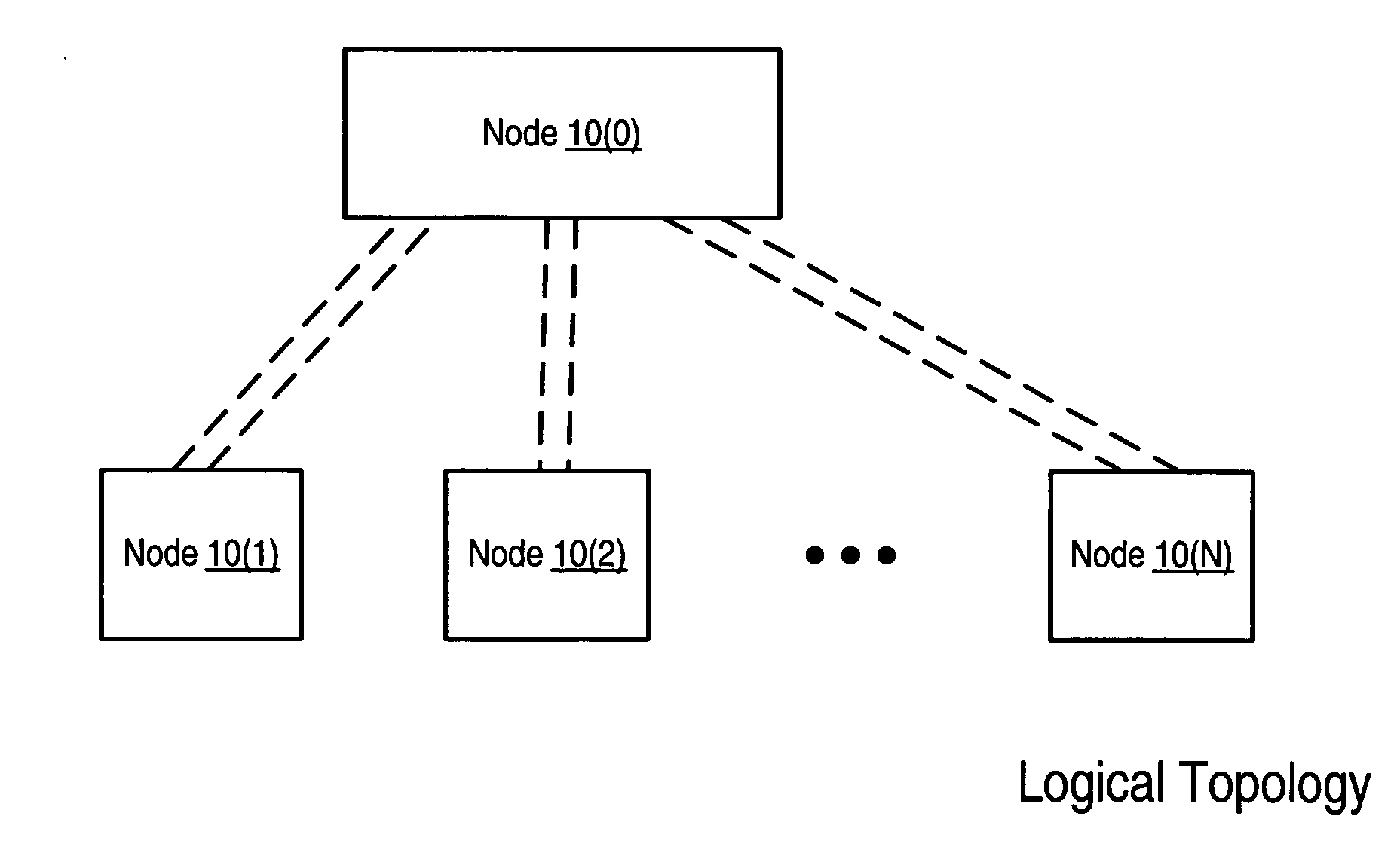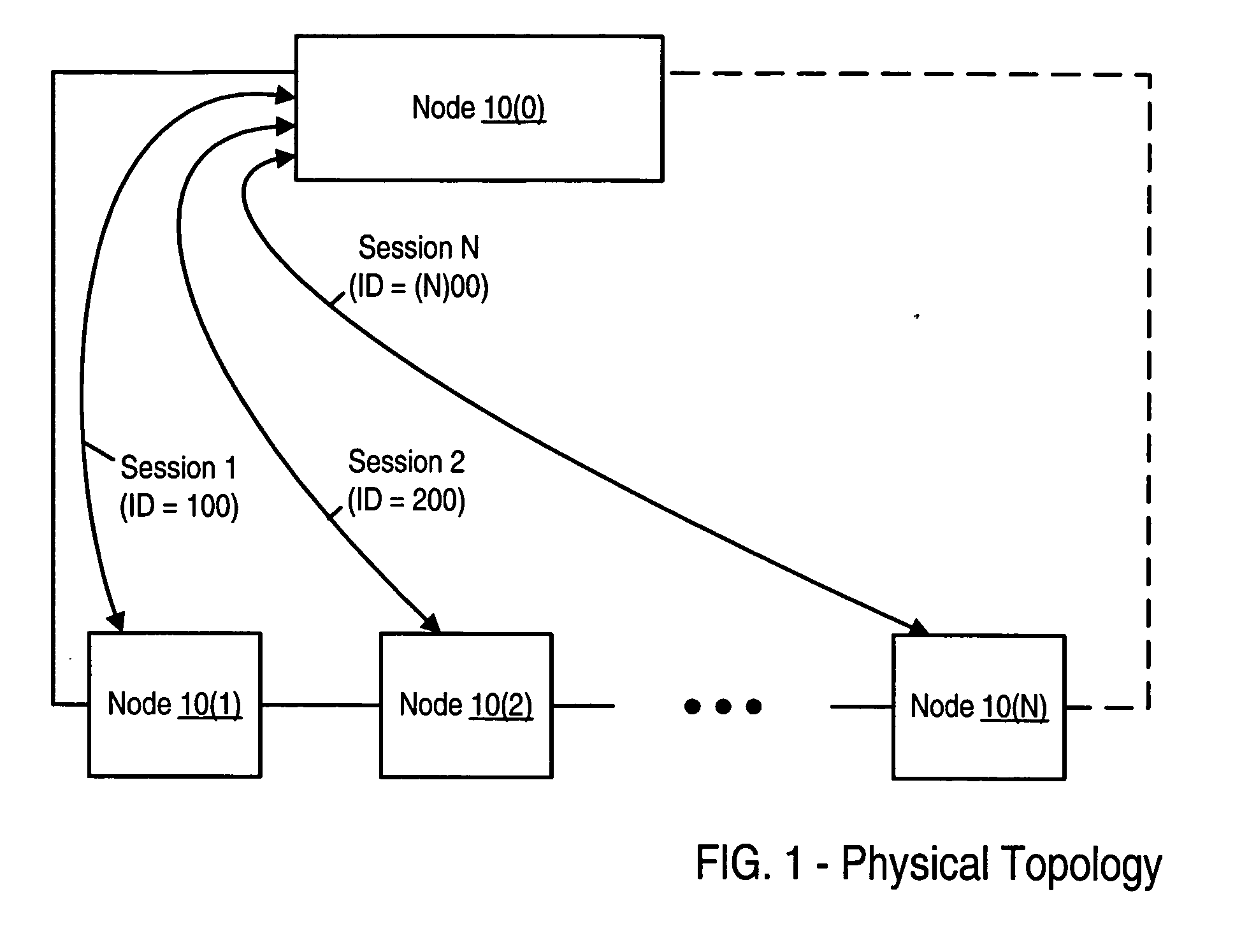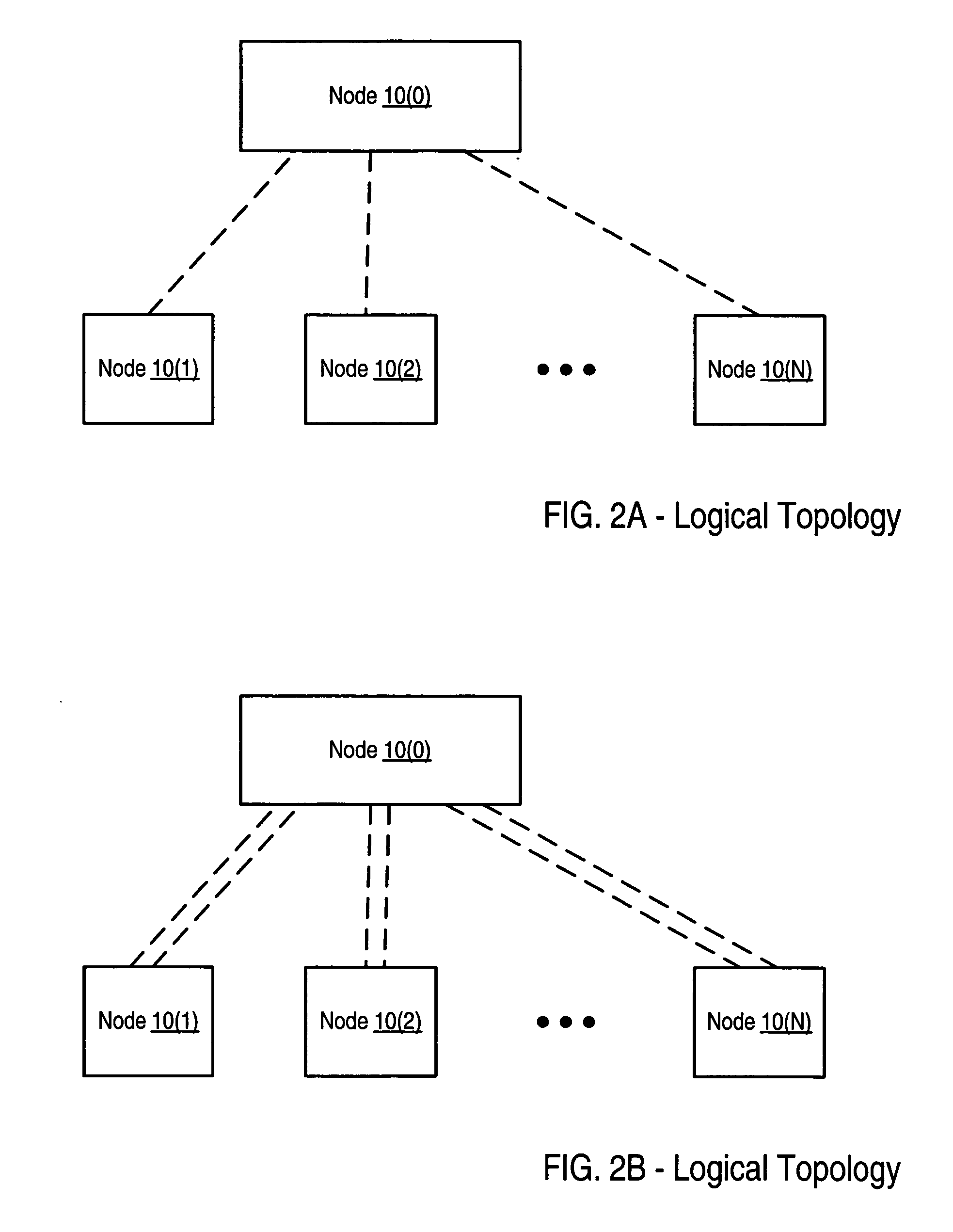Multiple aggregation protocol sessions in a daisy chain network
a technology of aggregation protocol and network, applied in the field of network, can solve the problems of high cost limited scalability of sophisticated network devices, and high cost of purchasing additional routers
- Summary
- Abstract
- Description
- Claims
- Application Information
AI Technical Summary
Problems solved by technology
Method used
Image
Examples
Embodiment Construction
[0013]FIG. 1 shows a daisy chain topology that interconnects N+1 network nodes, Nodes 10(0)-10(N), where N is an integer greater than or equal to one. Each node is some sort of network device, such as a router, switch, or bridge. In one embodiment, Node 10(0) is a primary device and Nodes 10(1)-10(N) are secondary devices. In such an embodiment, Node 10(0) configures, controls, and / or performs certain functions (e.g., such as routing and / or forwarding) for Nodes 10(10)-10(N).
[0014] The solid lines that connect nodes represent physical links. The dashed line between Node 10(N) and Node 10(0) represents an optional link that can connect the ends of the daisy chain to provide a redundant pathway (a configuration that includes such a redundant pathway is referred to herein as a “protected” daisy chain).
[0015] Node 10(0) establishes an aggregation protocol session, using an aggregation protocol such as Port Aggregation Protocol (PAgP) or Link Aggregation Control Protocol (LACP), with e...
PUM
 Login to View More
Login to View More Abstract
Description
Claims
Application Information
 Login to View More
Login to View More - R&D
- Intellectual Property
- Life Sciences
- Materials
- Tech Scout
- Unparalleled Data Quality
- Higher Quality Content
- 60% Fewer Hallucinations
Browse by: Latest US Patents, China's latest patents, Technical Efficacy Thesaurus, Application Domain, Technology Topic, Popular Technical Reports.
© 2025 PatSnap. All rights reserved.Legal|Privacy policy|Modern Slavery Act Transparency Statement|Sitemap|About US| Contact US: help@patsnap.com



